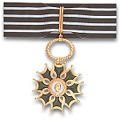 The gravelly soil of the Graves (Grahv) region of Bordeaux helps to create wines that capture the essence of the stones and gravel. Yes... think about it, the stones and gravel actually have an aroma and a flavor that they add to the wines. Graves are the best wines to serve with oysters they say, the crisp mineral wine with the briny mollusk. Taste and smell are so intertwined, and yet we celebrate one far more than the other. We forget just how connected they really are.
The gravelly soil of the Graves (Grahv) region of Bordeaux helps to create wines that capture the essence of the stones and gravel. Yes... think about it, the stones and gravel actually have an aroma and a flavor that they add to the wines. Graves are the best wines to serve with oysters they say, the crisp mineral wine with the briny mollusk. Taste and smell are so intertwined, and yet we celebrate one far more than the other. We forget just how connected they really are.When reading novels I'm made aware of how important all of the senses are to the writers. But many of them don't bother much with the sense of smell.
I just finished reading a novel where a young woman is in a coma. She is in this mysterious murky world and can't figure out who is around her or what's going on. She senses people, as a presence, but nothing more. Suddenly she knows her mother is sitting very close to her. She cannot see or feel her mother. She cannot hear her, as her mother is silent. It isn't touch, because her mother has not touched her. She knows instantly and positively that her mother is there because her mother wears a certain perfume. Her signature scent. And it's not just the perfume, but the certain amount that her mother wears. The concentration of the scent along with the scent. It is the perfume that reaches her first, before the underlying human scent, which in a hospital, with all its medicinal and cleaning fluid odors, is very hard to catch. But the perfume glides through and reaches her, reminding her of riding in the car with her mother when she was a child, enclosed with this perfume. Mother. She recalls precise details of a specific car trip while lying there, unable to move or communicate.
I also just finished re-reading The Vagabond by Colette. Inspired to do so by Lee's River who was reading a biography of Colette. In this short novel, Colette mentions distinct aromas and slight hints of scent dozens of times. Her descriptions of colors, feelings, landscapes, and people are amazing too, but here are some of her descriptions of scents:
"One can gaze full at the tarnished sun because its light is filtered by a fine rosy mist. A quivering, silvery incense smelling faintly of mushrooms, rises from the open stretches of grass."
"... leagues and leagues of gorse in flower, wasted riches which rebuff even the goats, and where butterflies, made languorous by the warm scent like half-ripe peaches and pepper, flutter about..."
I especially like her description of the scent of gorse, as it's a shrub found all over Ireland, (leagues and leagues of it!)
 Yvresse (the perfume formerly known as Champagne) by Yves Saint Laurent captures the fizzy feel of champagne, the blend of nectarine and caraway combine and are so like the high-pitched scent of unripe peach -- they almost capture the flavor of champagne. The other spices and vetiver capture the bubbly spirit of the celebratory nectar. Quite strong in an odd way, so use with care.
Yvresse (the perfume formerly known as Champagne) by Yves Saint Laurent captures the fizzy feel of champagne, the blend of nectarine and caraway combine and are so like the high-pitched scent of unripe peach -- they almost capture the flavor of champagne. The other spices and vetiver capture the bubbly spirit of the celebratory nectar. Quite strong in an odd way, so use with care. An imaginative work of art by perfumer Sophia Grojsman.
Yvresse (1993) The bottle was designed by Pierre Dinand to look like champagne cork.
The head notes include nectarine, caraway, heart notes include roses, vanilla, carnation, and the soul notes include spices, vetiver, patchouli, & various woods.
Photo top: Acrylic on canvas by Chedwick
Yvresse bottle photo: Chedwick


